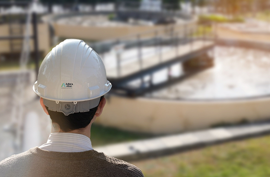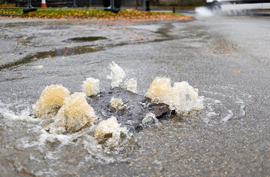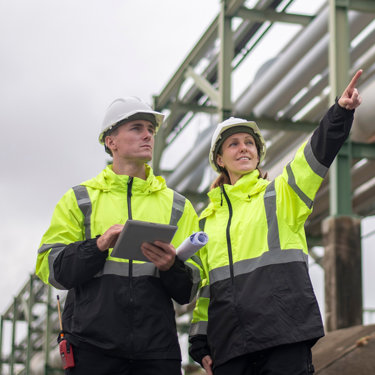Sewage management and CSOs – handling the pressures of an ageing infrastructure
Published: 28 May 2021
By: Matthew Humphreys, National Account Manager, Utilities
The water industry’s environmental track record has long been under the microscope – and an area of intense scrutiny is the increased use of combined sewage overflows (CSOs). These channels – which transport clean rainwater, sewage from buildings, and domestic wastewater for treatment – can become overloaded during heavy rains, risking the release of raw effluent into homes, roads, and open spaces.
To protect properties from flooding, water companies are permitted to intermittently discharge diluted sewage into waterways using CSOs. The Environment Agency (EA) acknowledges these ‘overflow valves’ as a ‘necessary part of the existing sewerage system’ – but is now joining the call from environmental advocates, the media, and the public to eliminate harm from CSOs.
Water companies face a mammoth challenge to shape long-term drainage strategies within a network that’s near breaking point. Matthew Humphreys, National Account Manager, Utilities from Adler and Allan, explores the spike in CSO use and offers practical solutions for sustainable sewage management.
New accountability levels for UK water companies
An ageing infrastructure, climate change, and population growth mean CSO discharges are happening more often. Environment Agency statistics show that the ten UK water and wastewater companies expelled raw sewage into rivers more than 400,000 times during 2020. The EA’s Event Duration Monitoring (EDM) data reveals the spills discharged for 3.1 million hours.
Historically, water companies self-regulated their CSO activity, but the government has recently pushed for more transparency. The creation of a cross-disciplinary Storm Overflows Taskforce has driven progress and encouraged a collaborative approach to tracking and reporting.
More than 12,000 monitors have already been installed, and a further 1,600 CSOs will be either investigated or improved between 2020 and 2025. Meanwhile, elements of the Sewage (Inland Waters) Bill are being fast-tracked through Parliament, introducing legal duties around discharge planning, progress updates, and data publishing.
Increased monitoring is a meaningful start, but water companies need proactive programmes to accelerate environmental change while cost-effectively cutting CSO use.
Aesthetic and biological riverbed surveys
Aesthetic riverbed surveys asses visual impact of the watercourse in the immediate vicinity of the CSO discharge looking for evidence of sewage fungus growth or sewage litter in the vegetation for example. This can be combined with a biological survey using a riverbed’s macroinvertebrate population to indicate a sewer’s impact on water quality. Typically, the riverbed undergoes kick sampling, which involves collection and analysis of resident macroinvertebrate species, assigning scores dependent on their tolerance for water contaminants. Results accurately classify the impact of storm overflows and detect emerging pollution risks before they cause long-term damage.
Event duration monitoring
An essential element of compliance reporting, Event Duration Monitoring (EDM) is required under the EA’s permitting rules. The process calculates how long a discharge event has lasted, measuring both flow and water level. Outputs also deliver a ‘big picture’ view of spill numbers and performance over time, making it simpler to isolate worst-offending assets for investigation and improvement.
Upstream catchment management
An upstream catchment study assesses water quality and conditions surrounding a particular CSO. The survey tracks upstream pollutants – such as runoff from farmland, forestry, and other industries – to identify and contain contamination risks at specific points throughout a river system, optimising maintenance work and spill prevention.
Environmental asset assessment
An environmental assessment begins with a visual asset survey to locate wear, tear, and structural defects. The sewer is then evaluated using a risk matrix of likely failure, highlighting its potential to cause spillages and ecological damage. These findings can be further examined against the sensitivity of the sewer’s surrounding environment, such as its proximity to a watercourse or protected site.
Infrastructure upgrades
Targeted upgrades – including the construction of supplementary storm tanks – can prevent bottlenecks that lead to sewage discharges. Selective storage additions can help your estate handle growing volumes of wastewater and hold diverted sewage in an environmentally conscious way, without reaching the tipping point of a potential pollution event.
By understanding your risk profile and pinpointing underperforming assets, you can intelligently focus investment, prioritise improvement activity, and responsibly reduce reliance on CSOs.
More from our Knowledge Hub
 News
NewsTwo prestigious wins at Water Industry Awards and Women in Utilities Awards 2025
 News
NewsCelebrating and supporting our veterans at the Forces in Business Awards 2025
 Insights
InsightsRebuilding trust in water: Interim recommendations from the Independent Water Commission
 Insights
InsightsMitigating the impact of the 4 ‘I’s to reduce pollution in water networks
Environmental compliance today, creating a sustainable tomorrow
Helping you reduce risk to the environment and your operation by managing assets compliantly while achieving commercial, ESG, and net-zero goals.
Contact our experts
